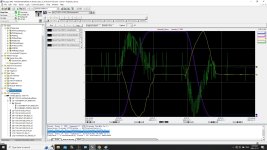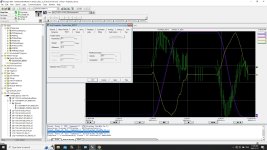Robb B
Lifetime Supporting Member
Hi everyone, I'm looking to modify some motion controls. There's a hoist that picks up to 8 railway ties, weighing up to 300 lbs each, which then travels to an unloading area and releases them. The current controls uses automatic and manual modes. There is a significant (10% if I recall correctly) dead spot in the valve used to control position, which leads to some correction (back and forth travel) of a few inches at each end of travel. With 2000+ lbs of ties, plus the steel hoist, there's a lot of inertia! The valve ends up oscillating a bit each time, but it works okay in automatic mode. When using manual mode, sometimes the hoist will oscillate forever when the jog buttons are released (forward or back). My new controls will hopefully prevent this by just stopping when the jog buttons are released. The current controls use the jog buttons as Motion Axis Move (towards home or unload positions) instead of Jog, and releasing the buttons mid-travel causes this interminable oscillation. Pressing the jog buttons again will usually cause the hoist to stop oscillating, but it's fairly frustrating for the operators and I think it's quite damaging to the machinery.
I attached the logic for the controls I wish to implement. Currently no movement occurs when the jog buttons are pressed, though I did change the MSO.EN to MSO.DN, after reading a relevant thread here, which I haven't had a chance to test yet, but I don't think that's the problem. Unless the .EN in combination with the ONS is causing the MSO to be enabled only for the current scan?
Yes, I have a request in for a better valve.
I attached the logic for the controls I wish to implement. Currently no movement occurs when the jog buttons are pressed, though I did change the MSO.EN to MSO.DN, after reading a relevant thread here, which I haven't had a chance to test yet, but I don't think that's the problem. Unless the .EN in combination with the ONS is causing the MSO to be enabled only for the current scan?
Yes, I have a request in for a better valve.






